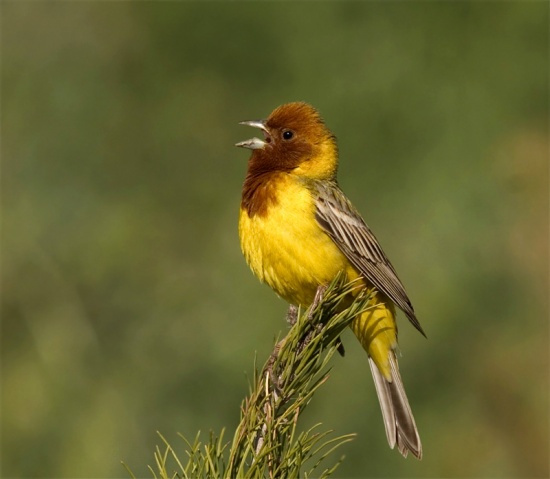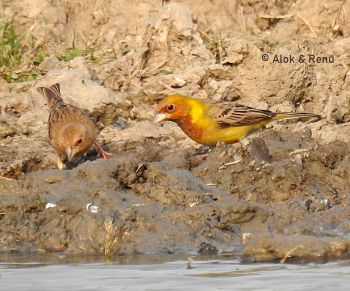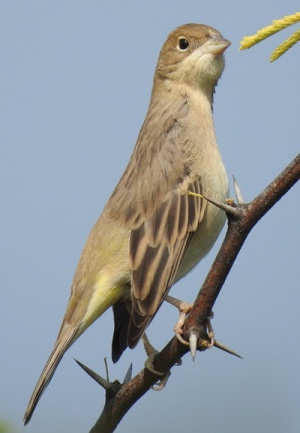- Emberiza bruniceps
Identification
15–16·5 cm (6-6½ in); a largish bunting with a fairly long tail
Breeding male
- Bright yellow underparts
- Green upperparts
- Brownish-red face and breast
Female overall paler than the male
- Paler underparts
- Greyish-brown back
- Grey head
Distribution
South-central Eurasia; winters in the Indian subcontinent.
Taxonomy
This is a monotypic species[1].
Habitat
Open scrub, cultivated fields, countryside, grassland, desert, semi arid areas, woodlands and forest.
Behaviour
Breeding
They make a nest in a tree or bush. The clutch consists of 3-5 eggs.
Diet
Their diet consists mostly of seeds, supplemented by insects during the breeding season.
References
- Clements, J. F., T. S. Schulenberg, M. J. Iliff, S. M. Billerman, T. A. Fredericks, B. L. Sullivan, and C. L. Wood. 2019. The eBird/Clements Checklist of Birds of the World: v2019. Downloaded from http://www.birds.cornell.edu/clementschecklist/download/
- Handbook of the Birds of the World Alive (retrieved February 2016)
- BF Member observations
- Wikipedia
Recommended Citation
- BirdForum Opus contributors. (2025) Red-headed Bunting. In: BirdForum, the forum for wild birds and birding. Retrieved 25 April 2025 from https://www.birdforum.net/opus/Red-headed_Bunting
External Links
GSearch checked for 2020 platform.1






